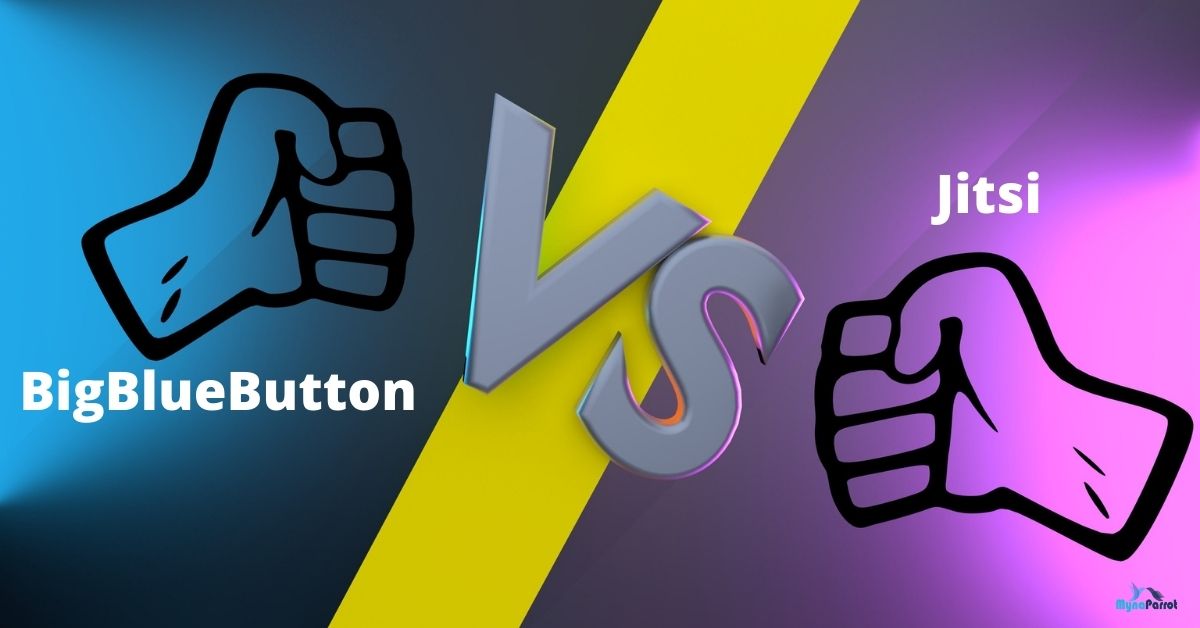BigBlueButton VS Jitsi: What's Better For online classroom solution?
Two excellent open-source video conference systems, BigBlueButton and Jitsi, can be utilized for online classroom solutions. They both have advantages and disadvantages, but which one is superior? Which platform is better for an online class? In this post, we'll do a side-by-side comparison of these two platforms to assist you in your decision.
What is Jitsi?
Jitsi is a free and open-source multiplatform voice (VoIP), video conferencing, and instant messaging suite for the web platform, Windows, Linux, macOS, iOS, and Android.
The Jitsi project began with the SIP Communicator (formerly known as Jitsi Desktop). With the advancement of WebRTC, attention shifted to the Jitsi Video bridge, which allows web-based multi-party video calling.
The team added Jitsi Meet - a video conferencing app. There are apps for the web, mobile, and computer.
Jitsi also operates meet.jit.si, a version of Jitsi Meet hosted by Jitsi for free community use. Other projects include Jigasi, lib-jitsi-meet, Jidesha, and Jitsi.
What is bigbluebutton?
BigBlueButton is a free web conferencing solution for Linux servers. Its primary purpose is to provide online education. The Open Source Initiative has certified BigBlueButton as an affiliate member.
The only requirement for using BigBlueButton is a basic HTML5 client. It uses the browser's support for real-time web communications called WebRTC to communicate audio, video, and screen remotely.
BigBlueButton's front-end is built on React, whereas the backend is powered by MongoDB and Node.js. It also utilizes Redis to keep track of its meetings, attendees, and any other relevant information.
Comparison of Features
Let's start with the most important features of Jitsi and bigbluebutton. Jitsi was created for online meetings, video conferences, voice conferencing, and instant messaging. In contrast, bigbluebutton was primarily concerned with online training sessions using a whiteboard and computer sharing capabilities to allow numerous users to interact in real-time.
Here's a simple spreadsheet to go through each characteristic one by one.
| Features | BigBlueButton | Jitsi |
| Whiteboard | Yes | No |
| Documents Upload | Yes | No |
| Breakout Rooms | Yes | No |
| Video Options | Yes | Yes |
| Chat | Yes | Yes |
| Polling | Yes | No |
| Multi-User Whiteboard | Yes | No |
| Shared Notes | Yes | No |
| Hand Rise | Yes | Yes |
| Emojis | Yes | Yes |
| Video Share | Yes | No |
| Closed Captions | Yes | No |
| Audio | Yes | Yes |
| Easy Recordings | Yes | No |
Comparison of integration
The online classroom is just one component of an online learning platform. It must be integrated into a learning management system(LMS) in a more comprehensive and thorough manner, as well as with greater depth. BigBlueButton is significantly superior to Jitsi when it comes to the integration with the online learning platform.
Here's another easy sheet to assist you in comparing the two options.
| LMS&CMS | BigBlueButton Plugin |
Jitsi Plugin |
| Canvas | Yes | No |
| Chamilo | Yes | No |
| Docebo | Yes | No |
| Drupal | Yes | No |
| ILIAS | Yes | No |
| Moodle | Yes | Yes |
| Mattermost | Yes | No |
| Nextcloud | Yes | No |
| OpenOLAT | Yes | No |
| Sakai Project | Yes | No |
| Tiki Wiki CMS | Yes | No |
| Qwerteach | Yes | No |
| WordPress | Yes | Yes |
| Joomla | Yes | No |
| KampüsProject | Yes | No |
| CollaboratorLMS | Yes | No |
Conclusion: bigbluebutton VS Jitsi
In short, bigbluebutton is a better option for online classrooms. While it's true that both platforms are open source and rely on the web browser as their client platform, there still seems to be an advantage in favor of BigBlueButton because it offers more integration with learning management systems.
In addition, BigBlueButton is also superior in terms of having a multi-user whiteboard as well as breakout rooms,video-sharing capabilities that allow for collaboration among numerous users - those features that are absent from Jitsi.
However, Jitsi has started some programs in recent months to enhance its usefulness in the educational sector. You may know that they've collaborated with the European Commission on a hackathon dedicated to Jitsi for education. We believe that Jitsi will grow more quickly to meet the demands of the online learning industry, allowing us to have a wider range of alternatives.






